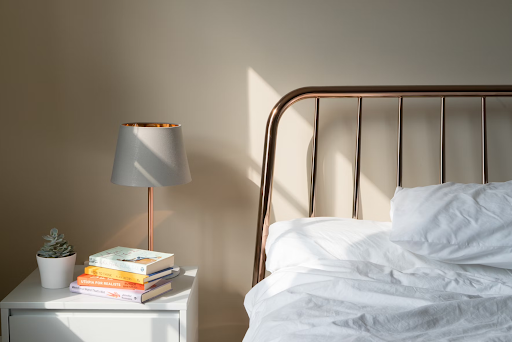How to spot and remove bed bugs

Author: Jonathan Warren

Bed bugs are bad news – end of story! These little creatures of the night can wreak havoc on your quality of sleep if they've chosen your bedroom to set up camp. But whilst the mere mention of these mites are likely to strike fear into hearts everywhere, what even are bed bugs? What do they look like? And most importantly, how can you get rid of them?
If you're worried, we've put together all the information you need to know when it comes to watching out for these pesky little bedfellows and what you can do if bed bugs have claimed your mattress as their home.
What are bed bugs?
These small pests hail from the genus ‘Cimex’ that feeds on blood – yuck!
Bed bugs can't fly, but they can move pretty rapidly around any home and quickly get settled into any of your soft furnishings. Beds are often their prime location, hence the name, as they come with guaranteed access to their meal supply (you!) and often provide a dark place to hide.
Unfortunately, bed bugs don't hang around when it comes to reproduction either – a female can lay hundreds of eggs over a lifetime and cause you real problems if you don’t get on top of the problem quickly. Plus, newborn bed bugs, known as nymphs, will shed their skin five times prior to becoming a fully-fledged adult, leaving their discarded shells behind in your bed.
What do bed bugs look like?
Bed bugs have a distinctive reddish-brown colour and an adult will look flat and oval-shaped, much like the shape of a head louse.
Newborn bugs are about the size of a small seed and adults grow to about a quarter of an inch. But no matter how small any bedbug is, they are all visible once you know when and where to look!
How to check for bed bugs?
Whilst it might seem impossible to catch these pesky critters in the act as they come and go while you sleep, there are several tell-tale signs that you might not be sleeping alone.
The first indicator is bites. Bed bugs exist to feed on blood and that comes with leaving marks on any area of your skin that’s exposed when you drift off to the land of nod, including your face, hands or arms. Often appearing in a line or a small cluster, bed bug bites are irritating and itchy but luckily do not cause more serious health issues.
Bite marks can be difficult to pin solely on bed bugs however – a few insect bites could also be the work of any nearby gnats or midges – so if you notice that you've been bitten, it’s time to check your house! As these critters are more likely to strike in the night, your bedroom and mattress are the best places to start your search.
You'll need to look for blood stains on your bedding or mattress where you may have been bitten or you might have squished any bugs in your sleep. You should also look out for any signs of bed bug excrement which is likely to look like little spots of rust and you might also spot light-brown shedded skin which the babies have left behind.
Getting even closer, if it looks like there are tiny white grains of rice in your bed, bedding, or anywhere else in your room, these could be bed bug eggs. Whilst your mattress and bedding are the go-to places on any search for suspected mites, they can easily set up camp in bed frames, bedside tables, clothes, curtains or carpet edges, too.
How to get rid of bed bugs?
Starting with the main area for activity, make sure your bed is as clean as it can be. We've already put together everything you need to know about mattress cleaning in our How to Clean Your Mattress blog and if bed bugs are in the mix, just be sure to thoroughly inspect your mattress and vacuum in all the crevices to catch any lurking pests. Using a stiff brush to scrub your mattress before vacuuming could help to remove them and their eggs, too.
Once your mattress has had a good vacuum, keep cleaning around your bed frame and target any corners or cracks on your flooring. You should also consider repairing any cracks in your walls or loose bits of wallpaper, decluttering your bedside tables and keeping your bedroom space as clear as possible. This will give them fewer places to hide! And whilst it's not really possible to fully prevent bed bugs, checking your pets regularly, assessing any hotel beds and being wary of second hand furniture can help give you the upper hand.
However, before you try some of our top tips to tackle bed bugs, remember that there are experts out there who are masters at sorting out bed bug issues in even the cleanest homes and bedrooms. If you know you have bed bugs, don't let them interfere with your quality of sleep and call in the professionals to make sure they are gone for good!



